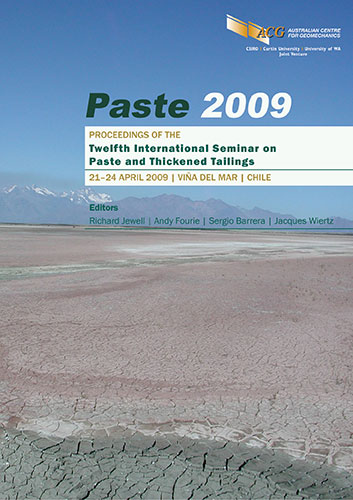Shear and Rheology Reduction for Flocculated Thickened Tailings

|
Authors: Salinas, C; Martinson, R; Cooke, R; Ferrada, O |
DOI https://doi.org/10.36487/ACG_repo/963_1
Cite As:
Salinas, C, Martinson, R, Cooke, R & Ferrada, O 2009, 'Shear and Rheology Reduction for Flocculated Thickened Tailings', in R Jewell, AB Fourie, S Barrera & J Wiertz (eds), Paste 2009: Proceedings of the Twelfth International Seminar on Paste and Thickened Tailings, Australian Centre for Geomechanics, Perth, pp. 3-10, https://doi.org/10.36487/ACG_repo/963_1
Abstract:
Test work has been conducted to determine the effect of shear on the rheology of flocculated thickened tailings of Minera Escondida with the objective of investigating the relationship between energy input and rheology reduction. This paper presents the test work results with the purpose of initiating discussion regarding the importance of conditioning flocculated high density thickened tailings to minimise rheology for pumping and pipeline transportation. A shear device was installed to determine the effect of shear on thickener underflow rheology. The device shears the tailings breaking down the floc-aggregate structure and thereby reducing the mixture rheology. Comparison between unsheared, sheared and fully sheared samples was performed. The results show that a significant rheology reduction can be achieved by shearing the tailings. A correlation between shear device energy input and rheology reduction has been obtained.
References:
Boger, D.V. and Nguyen, Q.D. (1985) Direct yield stress measurement with the vane method, Journal of Rheology,
29 3, pp. 335–347.
10 Paste 2009, Viña del Mar, Chile
© Copyright 2025, Australian Centre for Geomechanics (ACG), The University of Western Australia. All rights reserved.
View copyright/legal information
Please direct any queries or error reports to repository-acg@uwa.edu.au
View copyright/legal information
Please direct any queries or error reports to repository-acg@uwa.edu.au